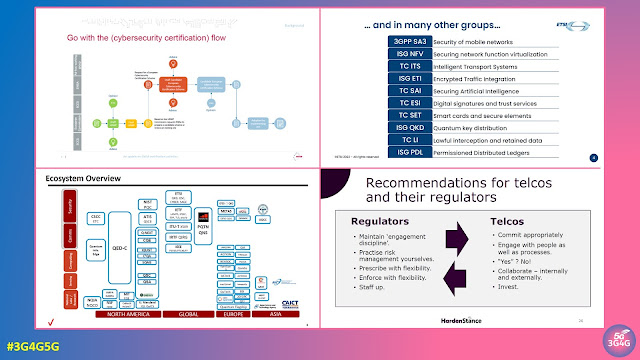The 3G4G Blog is our most popular blog, running for over 16 years with over 15.5 million views. With 2023 coming to an end, here are the top 10 most viewed posts from 2023 as well as top 5 most viewed videos. These posts/videos were not necessarily posted this year, so I have added the month and year each of them was posted.
- Network Slicing using User Equipment Route Selection Policy (URSP), Nov. 2021
- NWDAF in 3GPP Release-16 and Release-17, Feb. 2021
- New 5G NTN Spectrum Bands in FR1 and FR2, May 2023
- Non-public networks (NPN) - Private Networks by another name, May 2019
- How many Cell Sites and Base Stations Worldwide?, Mar. 2023
- What is RF Front-End (RFFE) and why is it so Important?, Jan. 2022
- 3GPP Release 17 Description and Summary of Work Items, Dec. 2022
- Two Types of SMS in 5G, Sep. 2020
- ATIS Webinar on "3GPP Release 18 Overview: A World of 5G-Advanced", Feb. 2023
- Prof. Ted Rappaport Keynote at EuCNC & 6G Summit 2023 on 'Looking Towards the 6G Era - What we may expect, and why', Aug. 2023
Here are top 5 videos viewed on our YouTube channel in the last year:
- Beginners: What is Industrial IoT (IIoT), Feb.2019
- Beginners: Radio Frequency, Band and Spectrum, July 2017
- Beginners: Different Types of RAN Architectures - Distributed, Centralized & Cloud, July 2021
- Beginners: Fixed Wireless Access (FWA), Sep. 2018
- Beginners: MNO, MVNO, MVNA, MVNE: Different types of mobile operators, Apr. 2018
Let us know about your favourite post and/or video in the comments below.
Related Posts:
- Free 6G Training: Top 10 Posts for 2023
- Telecoms Infrastructure Blog: Top 5 Posts For 2023
- Connectivity Technology Blog: Top 5 Posts for 2023
- Operator Watch Blog: Top 5 Posts for 2023
- Private Networks Technology Blog: Top 5 Posts for 2023
- The 3G4G Blog: Top Blog Posts of 2022
- The 3G4G Blog: Top 10 Posts for 2021 and Top 5 Videos
- The 3G4G Blog: Top 10 Posts for 2020 and Top 5 Videos













